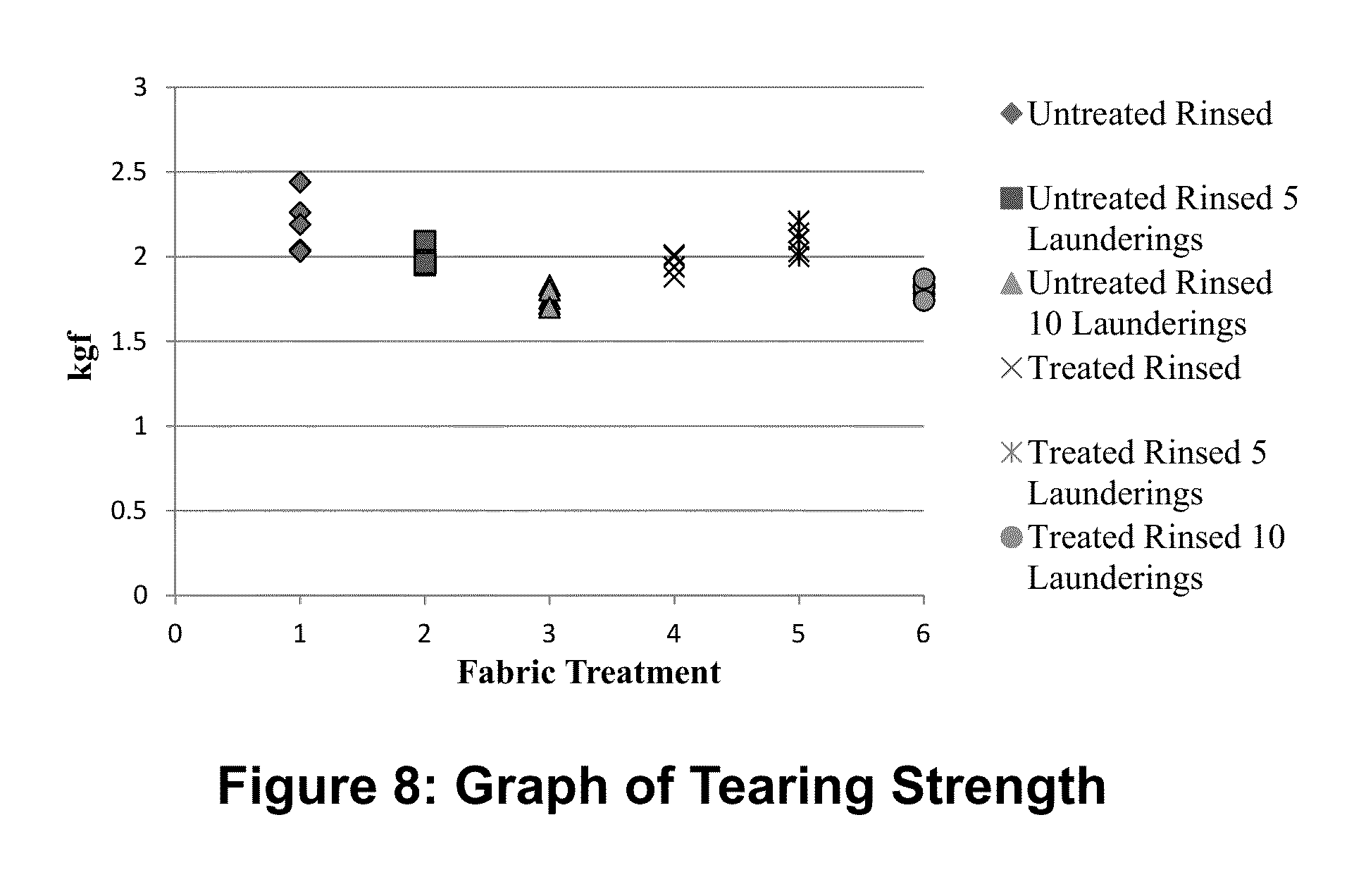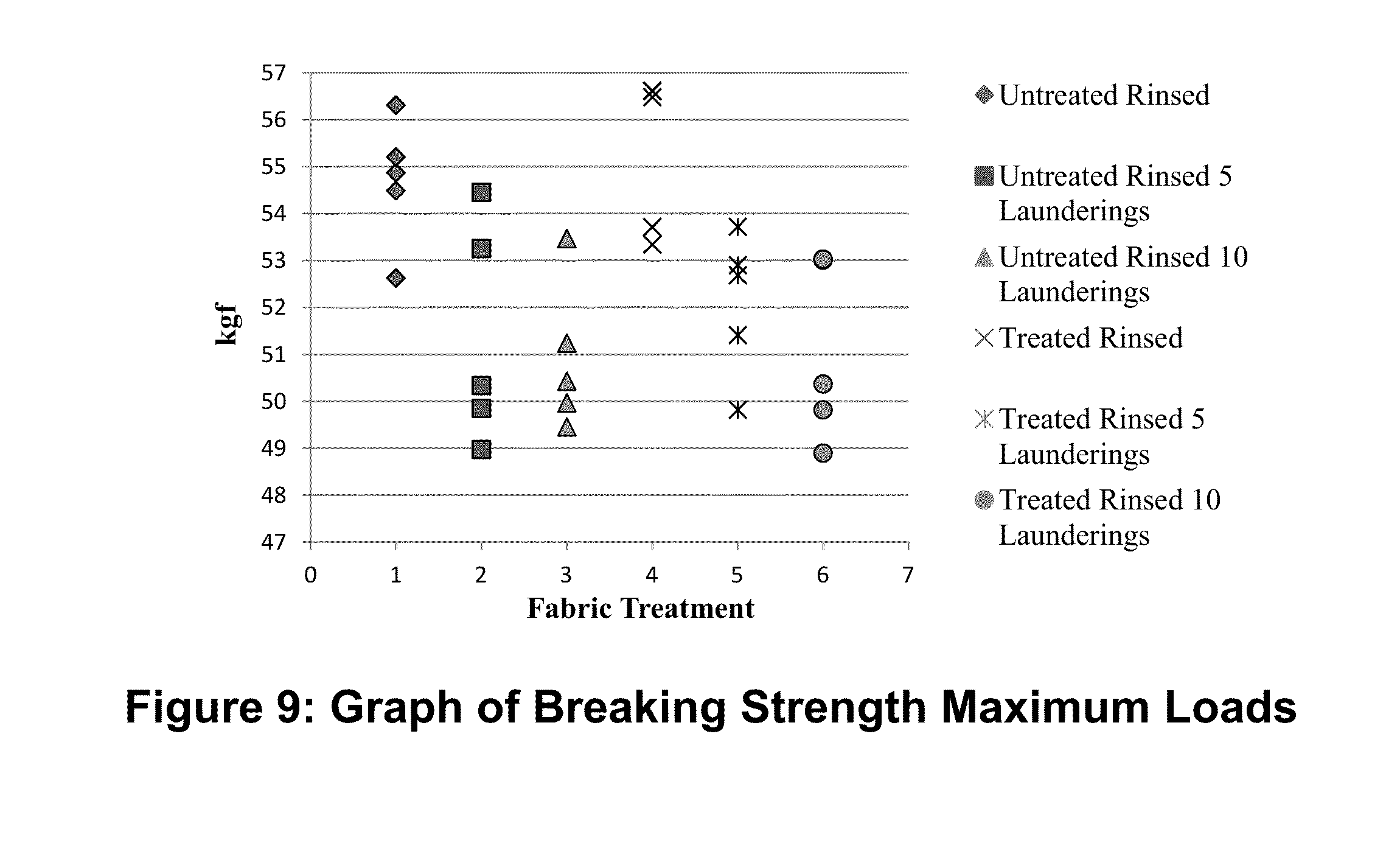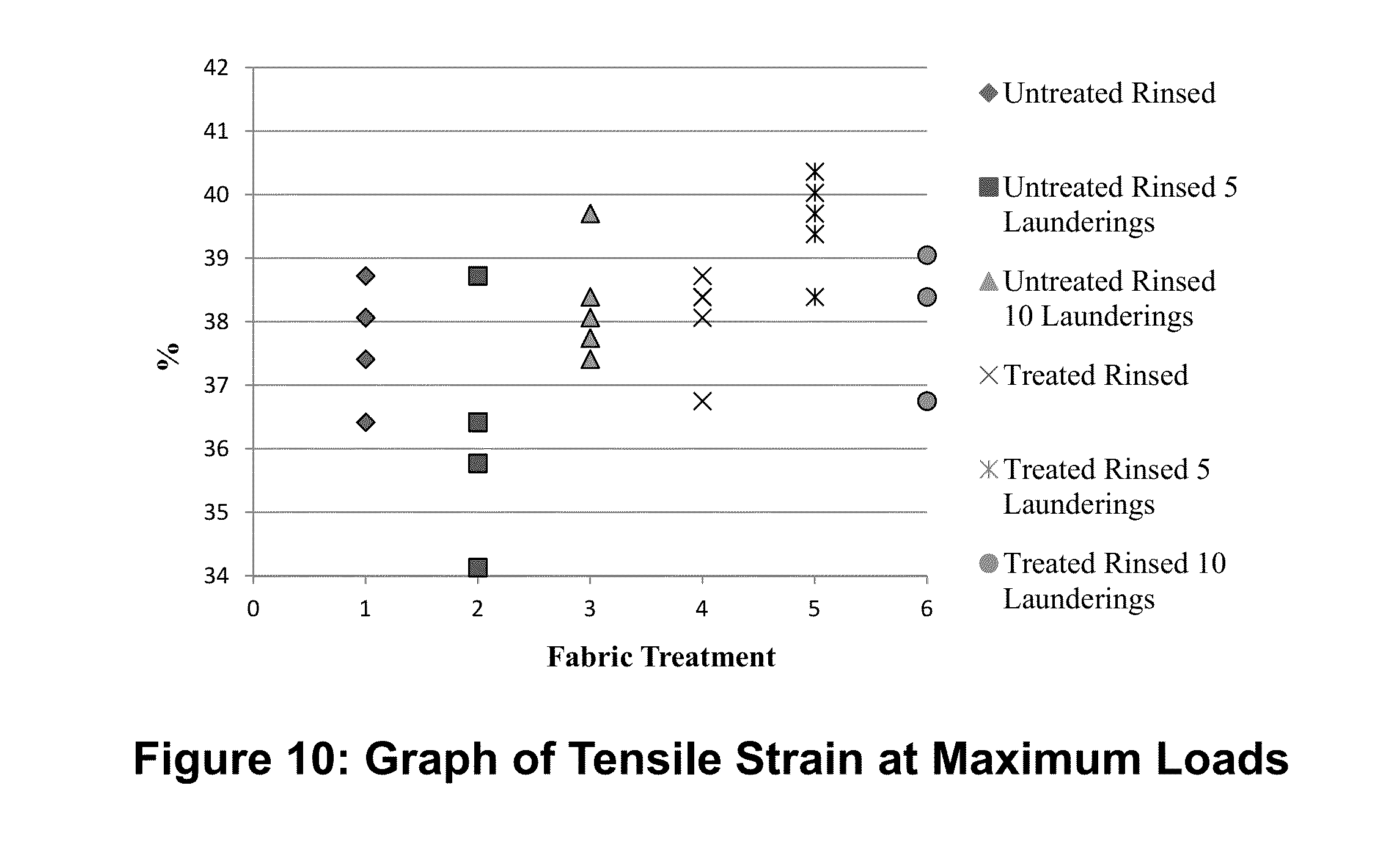Textiles having antimicrobial properties and methods for producing the same
a technology of antimicrobial properties and textiles, which is applied in the field of textiles having antimicrobial properties and methods for producing the same, can solve the problems that antimicrobial agents should not allow the development of microorganisms, and are toxic to people and the environment, and achieves the effects of less concern about drug resistance of microorganisms, rapid inactivation of microorganisms, and durable and regenerable antimicrobial functions
- Summary
- Abstract
- Description
- Claims
- Application Information
AI Technical Summary
Benefits of technology
Problems solved by technology
Method used
Image
Examples
Embodiment Construction
[0083]The following are used in practicing various aspects of the present invention:
[0084]Lab Coats[0085]META Labwear white lab coats distributed by White Swan brands[0086]Fiber Content—65 / 35 polyester / cotton[0087]Weave Style—Poplin[0088]Fabric Weight—188.04 g / m2, 482 grams per size XLarge lab coat[0089]Ends per Centimeter—40[0090]Picks per Centimeter—20
[0091]Chemicals[0092]Naturally derived antimicrobial and associated fixative agents[0093]Tap water[0094]Tide Institutional Formula, Powder Soap
[0095]Test Microbes[0096]Staphylococcus aureus—Clinical Isolate from skin[0097]Bacillus cereus—Ward's Natural Science[0098]Mycobacterium smegmatis—Ward's Natural Science
[0099]Antimicrobial Assessment Materials[0100]Nutrient Broth—Ward's Natural Science[0101]Agar—Ward's Natural Science[0102]Petri Dishes—Ward's Natural Science[0103]Eppendorf Tips—Ward's Natural Science[0104]Puritan Sterile Cotton Tipped Applicators—Thomas Scientific
[0105]Equipment[0106]Whirlpool Fabric Sense System Washing Machi...
PUM
| Property | Measurement | Unit |
|---|---|---|
| length | aaaaa | aaaaa |
| length | aaaaa | aaaaa |
| width | aaaaa | aaaaa |
Abstract
Description
Claims
Application Information
 Login to View More
Login to View More - R&D
- Intellectual Property
- Life Sciences
- Materials
- Tech Scout
- Unparalleled Data Quality
- Higher Quality Content
- 60% Fewer Hallucinations
Browse by: Latest US Patents, China's latest patents, Technical Efficacy Thesaurus, Application Domain, Technology Topic, Popular Technical Reports.
© 2025 PatSnap. All rights reserved.Legal|Privacy policy|Modern Slavery Act Transparency Statement|Sitemap|About US| Contact US: help@patsnap.com



